Practice Test: Gate Civil Engineering(CE) 2020 Paper: (Session I) - GATE MCQ
30 Questions MCQ Test - Practice Test: Gate Civil Engineering(CE) 2020 Paper: (Session I)
The total expenditure of a family, on different activities in a month, is shown in the piechart. the extra money spent on education as compared to transport (in percent) is ____.
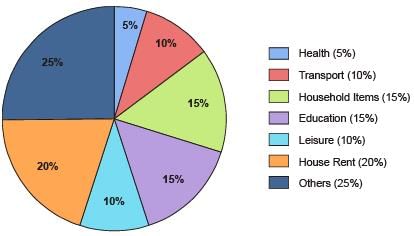

The unit’s place in 26591749110016 is ________.
The sum of two positive numebrs is 100. After subtracting 5 from each number, the product of the resulting numbers is 0. One of the original numbers is ______.
Five friends P, Q, R, S and T went camping. At night, they had to sleep in a row inside the tent. P, Q and T refused to sleep next to R since he snored loudly. P and S wanted to avoid Q as he usually hugged people in sleep.
Assuming everyone was satisfied with the sleeping arrangements, what is the order in which they slept?
The american psychologist Howard Gardner expounds that human intelligence can be sub-categorised into multiple kinds, in such away that individuals differ with respect to their relative competence in each kind. Based on this theory, modern educationists insist on prescribing multi-dimensional curriculum and evaluation parameters that enable development and assessment of multiple intelligences.
Which of the following statements can be inferred from the given text?
Insert seven numbers between 2 and 34, such that the resulting sequence including 2 and 34 is an arithmetic progression. The sum of these inserted seven numbers is ________.
It is a common criticism that most of the academicians live in their _____, so, they are not aware of the real life challenges.
Select the work that fits the analogy:
Fuse : Fusion :: Use : ______
His number for reading is insatiable. He reads indiscriminately. He is most certainly a/an ________ reader.
If 0, 1, 2, ..., 7, 8, 9 are coded as O, P, Q, ..., V, W, X, then 45 will be coded as _______.
The data for an agricultural field for a specific month are given below:
Pan Evaporation = 100 mm
Effective Rainfall = 20 mm (after deducting losses due to runoff and deep percolation)
Crop Coefficient = 0.4
Irrigation Efficiency = 0.5
The amount of irrigation water (in mm) to be applied to the field in that month, is
Uniform flow with velocity U makes an angle θ with the y-axis, as shown in the figure

The velocity potential (φ), is
An amount of 35.67 mg HCl is added to distilled water and the total solution volume is made to one litre. The atomic weights of H and Cl are 1 and 35.5, respectively.
Neglecting the dissociation of water, the pH of the solution, is
In a soil investigation work at a site, Standard Penetration Test (SPT) was conducted at every 1.5 m interval up to 30 m depth. At 3 m depth, the observed number of hammer blows for three successive 150 mm penetrations were 8, 6 and 9, respectively. The SPTN-value at 3 m depth, is
In the following partial differential equation, θ is a function of t and z, and D and K are functions of θ

The above equation is
Consider the planar truss shown in the figure (not drawn to the scale)
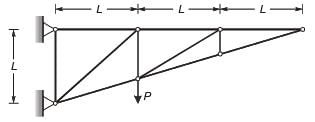
Neglecting self-weight of the members, the number of zero-force members in the truss under the action of the load P, is
A planar elastic structure is subjected to uniformly distributed load, as shown in the figure (not drawn to the scale)
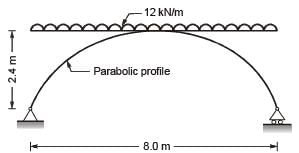
Neglecting self-weight, the maximum bending moment generated in the structure (in kNm, round off to the nearest integer), is ___________ .
A fully submerged infinite sandy slope has an inclination of 30° with the horizontal. The saturated unit weight and effective angle of internal friction of sand are 18 kN/m3 and 38°, respectively. The unit weight of water is 10 kN/m3. Assume that the seepage is parallel to the slope. Against shear failure of the slope, the factor of safety (round off to two decimal places) is _______.
The value of  is
is
A reinforcing steel bar, partially embedded in concrete, is subjected to a tensile force P. The figure that appropriately represents the distribution of the magnitude of bond stress (represented as hatched region), along the embedded length of the bar, is
Velocity of flow is proportional to the first power of hydraulic gradient in Darcy’s law. The law is applicable to
The probability that a 50 year flood may NOT occur at all during 25 years life of a project (round off to two decimal places), is _______.
In a two-dimensional stress analysis, the state of stress at a point P is

The necessary and sufficient condition for existence of the state of pure shear at the point P, is
The true value of ln(2) is 0.69. If the value of ln(2) is obtained by linear interpolation between ln(1) and ln(6), the percentage of absolute error (round off to the nearest integer), is
In an urban area, a median is provided to separate the opposing streams of traffic. As per IRC : 86-1983, the desirable minimum width (in m, expressed as integer) of the median, is __________.
In a drained tri-axial compression test, a sample of sand fails at deviator stress of 150 kPa under confining pressure of 50 kPa. The angle of internal friction (in degree, round off to the nearest integer) of the sample, is ________.
During chlorination process, aqueous (aq) chlorine reacts rapidly with water to from Cl–, HOCl, and H+ as shown below

The most active disinfectant in the chlorination process from amongst the following, is
A 4 m wide rectangular channel carries 6 m3/s of water. The Manning’s ‘n’ of the open channel is 0.02. Considering g = 9.81 m/s2, the critical velocity of flow (in m/s, round off to two decimal places) in the channel, is ________.
The Los Angeles test for stone aggregates is used to examine
A river has a flow of 1000 million litres per day (MLD), BOD5 of 5 mg/litre and Dissolved Oxygen (DO) level of 8 mg/litre before receiving the wastewater discharge at a location.
For the existing environmental conditions, the saturation DO level is 10 mg/litre in the river. Wastewater discharge of 100 MLD with the BOD5 of 200 mg/litre and DO level of 2 mg/litre falls at that location. Assuming complete mixing of wastewater and river water, the immediate DO deficit (in mg/litre, round off to two decimal places), is _________.








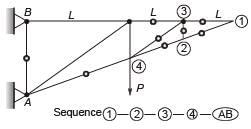
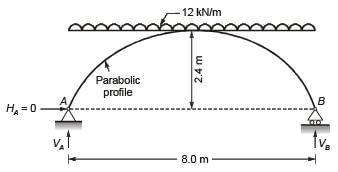



 from so by L-Hospital Rule
from so by L-Hospital Rule



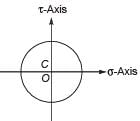







 = 2.45 m/s
= 2.45 m/s











